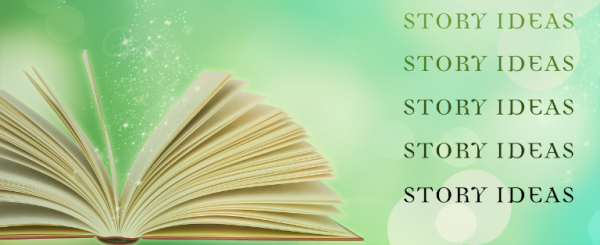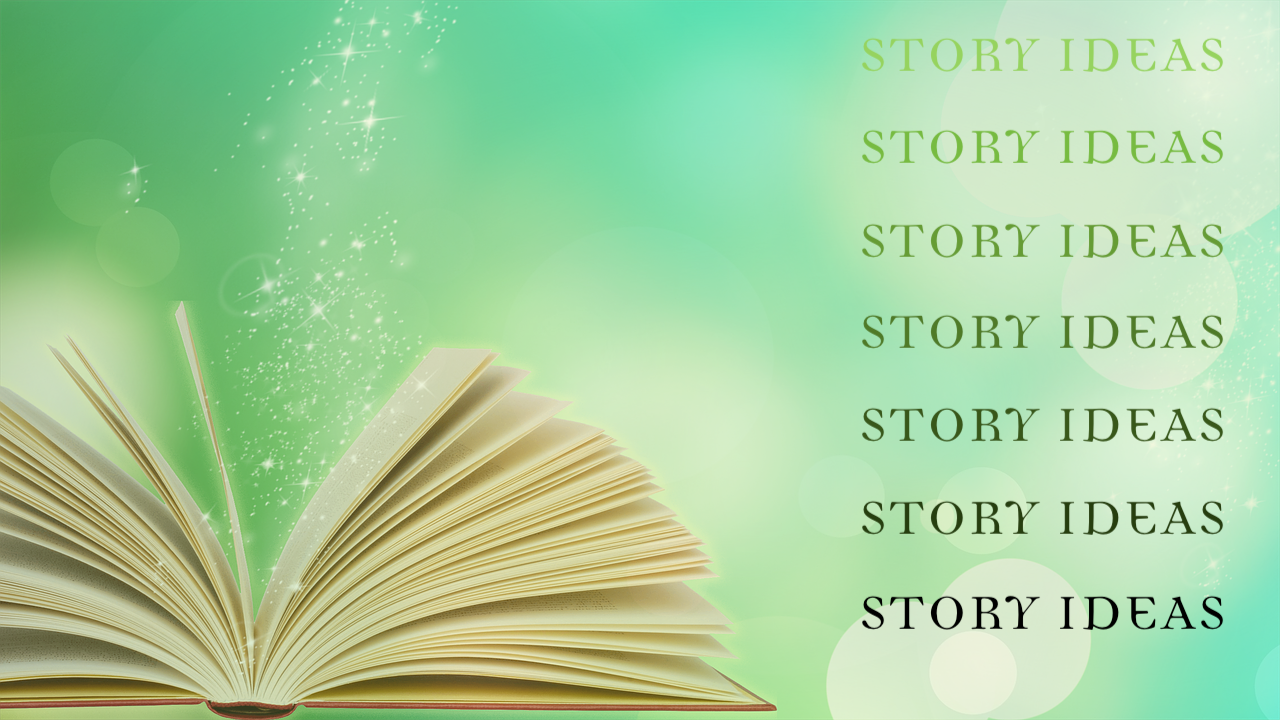
In our previous article, Choosing Your Fantasy Subgenre, we described many of the most common subgenres in which a fantasy novel might fall, with the understanding that while one should be chosen as the primary subgenre, your fantasy novel might have aspects of several of them. Now it’s time to think about the next step in fantasy novel writing, which is to come up with an overall story idea. This article will guide you through a couple different ways to help you come up with your unique idea.
Let Your Subgenre Drive Your Story Idea Brainstorming
This article is starting off with a big assumption: You’ve chosen to write a fantasy novel because you’re a big fan of fantasy fiction and have read many fantasy novels already. If you haven’t read a lot of fantasy, then STOP – put your desire to write a fantasy novel on hold while you spend at least several months reading lots of great fantasy from multiple subgenres (start with the examples provided in the article about subgenres). This might feel like a buzzkill to you as an aspiring writer, but the single biggest thing that will make you a good writer is tons of reading. Ask any successful author and they’ll tell you the same thing: The first step in becoming a good writer is being well-read. But don’t worry, this article will still be here when you’re done reading!
Okay, now that you’re well-read, let’s start by revisiting the subgenres. If you’ve already chosen a primary subgenre for your fantasy novel, then you probably made your choice based on examples of novels or movies from that subgenre that you really liked. Sometimes coming up with your own story idea can be as simple as remembering those great examples you like and coming up with a variation or, if you’re feeling brave, an improvement to one or more of them. Think of what elements from each of your favorite dozen or so fantasy novels really appealed to you most and incorporate them into your story idea. The elements you should think about include the following:
- Subgenre: What fantasy subgenre appeals to you most?
- Plot: What kind of plot or storyline do you like best?
- Character: What type of character are you most drawn to?
- Theme: What themes appeal to you most in stories you like?
- Setting: What kind of setting do you most want to write about?
Answering each of those questions can result in a pretty strong general story idea! But if this process isn’t working you, fear not! Below is another option that should help.
9 Basic Story Plots to Fuel Your Story Idea
Storytelling has been one of the most effective forms of communication from the very beginning of the human experience. People who have studied thousands of stories have come to realize that they often follow (not always, but mostly) one of about nine different basic plots. The most recent treatment of these archetypal storylines is from Christopher Booker in The Seven Basic Plots: Why We Tell Stories. He focused on seven but there are really nine – there are a couple he just doesn’t like very much. If you really want the full details on these nine different basic plots, you could read his book, except that it’s a whopping 736 pages! And you want to get started on writing, so below is a very brief sketch of each of the basic story plots:
- Overcoming the Monster: The main character must defeat a monster or villain that threatens the character’s home community, the whole world or heck, even the entire universe if you want. There will be a final climactic fight with the antagonist. In fantasy, the hero often needs the assistance of a magic weapon and maybe a whole team of fellow fighters to win the battle. The Hobbit is a good example of this, though it also has equal elements of the quest plot in it as well.
- Rags to Riches: The main character starts out as an unlikely prospect, but through the course of the story fulfills his potential and achieves success. Two variations on this one include a “dark” version where the main character fails because of the wrong motivations (which many say makes it a tragedy) and also a “hollow victory” variation where the character succeeds but is still unfulfilled. Cinderella is a classic example of this storyline (though it has elements of the rebirth plot in it as well).
- Quest: The main character must set out on some kind of epic journey to obtain an important item or achieve some other objective. Variations include when the sought-after object or mission accomplished does not bring happiness as expected. The Lord of the Rings trilogy is an example of a quest, with the twist that the goal is to get rid of an object rather than find it.
- Voyage and Return: The main character discovers another world. It may seem wonderful at first but then turns sour, prompting the character to find their way back home. Consider how much the character learns and grows, and what’s at stake as the character decides whether to stay or go. A classic example of this one is The Wizard of Oz.
- Comedy: In this context, comedy doesn’t necessarily mean ha-ha funny (though it can). It’s more about a happy ending or successful outcome, as opposed to the opposite, which is tragedy. In general, the idea is that things are better at the end of the story, not worse.
- Tragedy: As the opposite of comedy, tragedy indicates failure or an otherwise negative outcome at the end of the story. You’ll notice that this comedy/tragedy idea could be applied to any of the other seven basic plots.
- Rebirth: A character is somehow trapped or otherwise stuck in a bad situation but manages to escape it, often with the help of a rescuer, but it could also be by their own grit and determination. Beauty and the Beast is a classic rebirth tale.
- Mystery: This is when the main character is trying to find out the truth about what happened with some kind of awful event and bring who or what is responsible for it to justice. You have to decide whether or not the character is personally connected to the awful event or not. In fact, mystery fantasy can be considered a subgenre in and of itself. This would typically mean the entity responsible for the awful event is a supernatural or magical creature or person of some kind.
- Rebellion Against The One: The main character is pitted against a seemingly all-powerful entity that controls things. It often involves the character discovering the all-powerful entity is not benevolent, thereby sparking the rebellion. Then the question becomes whether or not the character will succeed in the rebellion and improve things or just ends up submitting to The One. In The Hunger Games trilogy, the rebellion of Katniss does eventually bring down the tyrant(s).
As you can see from the above, any given fantasy novel may combine one or several of these basic plots together. Which one(s) appeal to you the most? Does one of them spark a story idea in your mind that feels worthy of further development? If so, then you’re well on your way to developing to developing your own great story idea! The next thing you need to do is more fully develop your central character, which will be the subject of a future article.
Try tooleybook, the free tool created for writing books. It takes less than 30 seconds to create an account and start writing.
With tooleybook you can view timelines, chapter purpose, word count, track time and place, tag scenes, move and organize scenes and more...More Info



Hello! tooleybook.com site is very useful and inspirational.
I will surely foreward this post to all of my pals! Its very first-rate and a very decent read!
Good article, thank you. I just signed up to your rss feed!
I just signed up to your blogs rss feed. Will you post more on this subject?